It seems wrong to start an event report with an ugly image of wanton ecological vandalism, but this scene pictured below, close to the Burren limestone near Gort, underscores in stark reality the brutality being meted out to our country, Europe and the planet. A more savage scene, of bulldozed limestone pavement near the Burren College of Art dragged my mood to a darker place. According to the Natural History Museum in London, out of all EU countries (including the UK) only Malta is worse in terms of biodiversity loss than Ireland.
See
https://www.nhm.ac.uk/discover/news/2020/september/uk-has-led-the-world-in-destroying-the-natural-environment.html#:~:text=While%20countries%20such%20as%20Canada,UK%20only%20has%2050.3%25%20remaining.
This puts Ireland in the bottom 10% of countries globally in terms of biodiversity intactness. We have no natural habitats left, and our semi-natural habitats continue to suffer an onslaught. The greatest reason for biodiversity loss in Ireland is the change in land use, mostly for agriculture. Other drivers include climate change, pollution and invasive non-native species. The issues shown in this photograph are land-use change and pollution (increased carbon emissions).
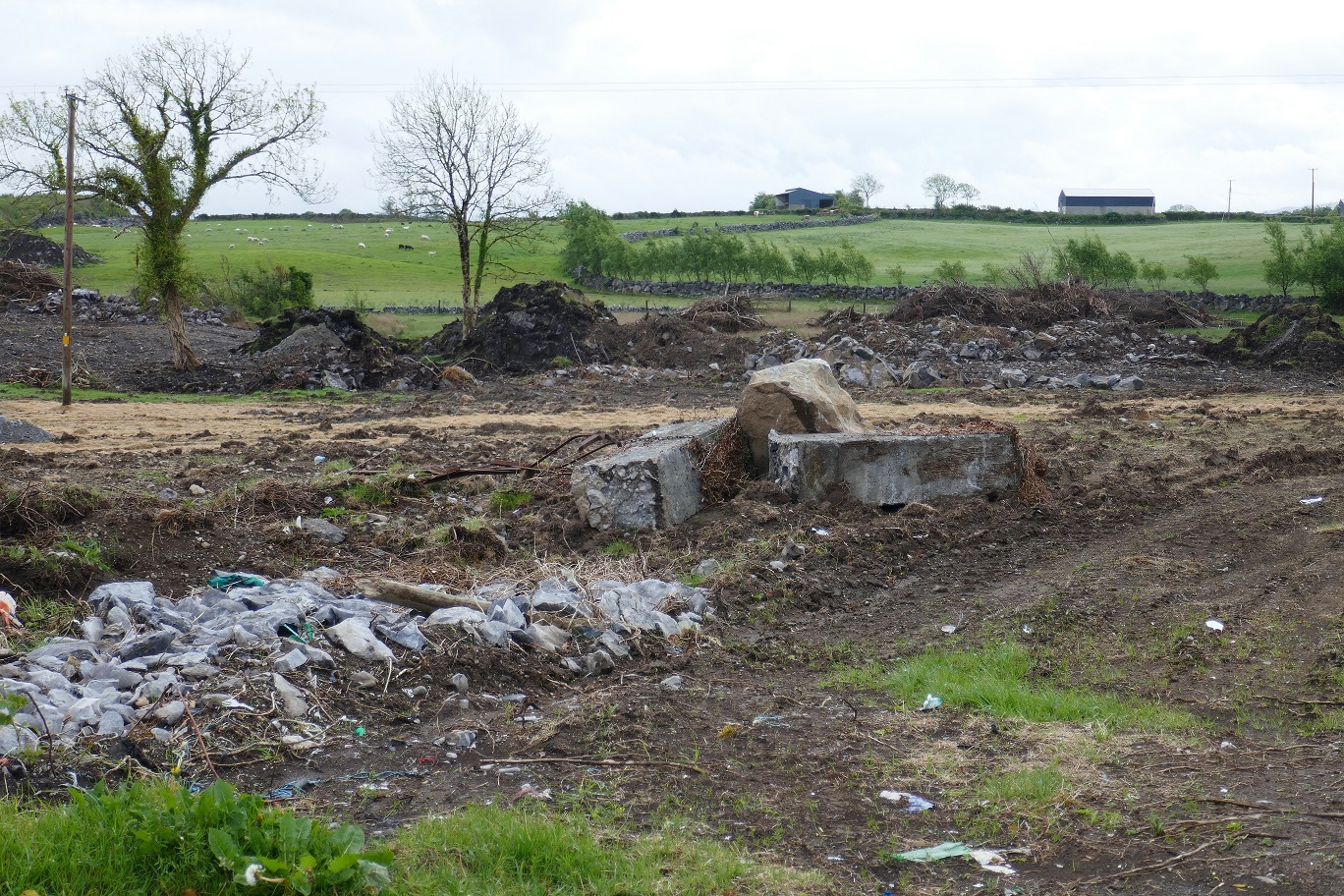
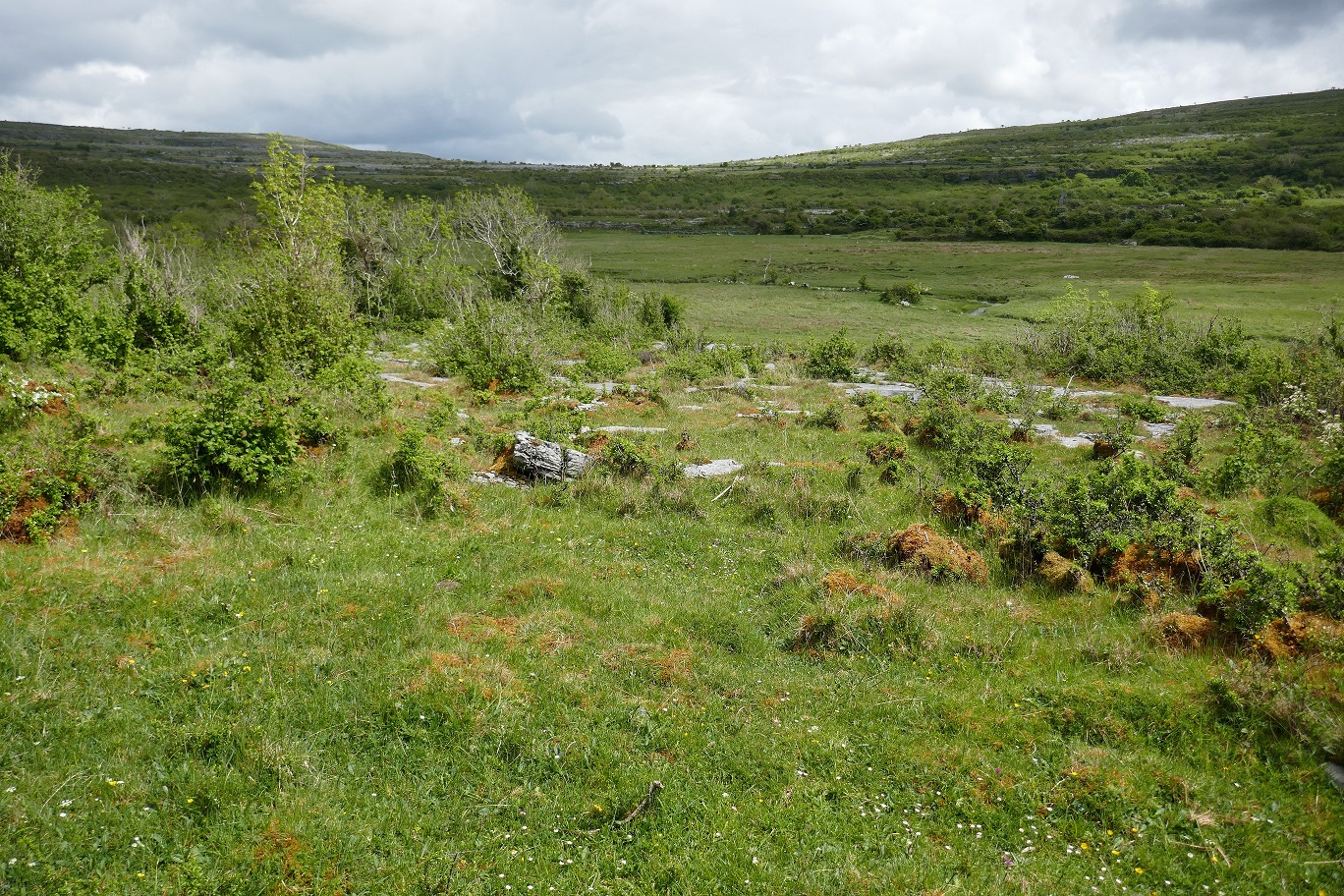
The Butterfly walk at Fahee North just north of the Burren Perfumery was eagerly anticipated. The walk, in outstanding and varied habitat in late spring, promised to yield so many species, including several rarities. But the weather was against us. Despite the forecast of sunny spells, it rained for much of the walk, although not heavily, which meant we saw no butterflies on the grassy area adjoining the road.
The habitat ingredients are all there and brightened by Early Purple Orchids. Added to this the site is managed for nature, with extensive cattle grazing and scrub control applied. But butterflies, especially spring species, are fussy about weather, and stubbornly remain out of sight during rain. Higher air temperatures in summer allow butterflies, notably the Dark Green Fritillary, Meadow Brown and Ringlet to fly in light rain, but in May butterflies refuse to do that.
We looked at various habitat features that favour butterflies, and we found Orange-tip eggs on Cuckoo Flower (we glimpsed a Cuckoo too!) growing at the edge of a stream, typically one egg per flowerhead.
We entered the limestone pavement (shattered type with some larger pavement) immediately west of the grassland and it was very interesting to note the change in temperature-the heat rising from the limestone juxtaposed with the cooler adjoining wet grassland. The cloud was thinning and finally, a Dingy Skipper darted into view. Everyone was impressed with this characterful butterfly, and we compared him with a male Common Heath moth, with both looking superficially similar on the wing.
I kept promising that any sun would yield a Pearl-bordered Fritillary, and flashes of yellow were reported, but no fritillary was confirmed.
Finally, there she was, in a really sheltered opening, fluttering low before alighting on a slab of warming stone. Netted and jarred, she was shown to her admirers. A major ‘tick’ for many in our band, some coming from Dublin to see their first Pearl-bordered Fritillary.
Then a snow-white female Wood White appeared, powdered white like an aristocratic lady from a Jane Austen novel. Her delicate, ponderous flight, gracefully slow motion, earned her praise.
Then a Dew Moth was caught and shown, its lovely deep yellow marked with black dots imbuing it with a taste of the exotic, and exotic it is, because this is a rare species in Ireland although happily not currently regarded as under threat, unlike the Pearl-bordered Fritillary, rated Endangered or the Near Threatened Wood White.
Abruptly, the walk ended as many of those attending were on their way to another walk elsewhere as part of the Burren in Bloom Festival. But everyone left happy, as the weather gave us just a glimpse of the glories of the Burren.
Glories like the butterflies and habitats shown in this post must be treasured. Beautiful, rare butterflies like the Pearl-bordered Fritillary cling on to their limestone habitats and are not found elsewhere in Ireland. Once destroyed, the habitat and butterfly are gone forever.
Our count of enchanted objects must diminish no further.
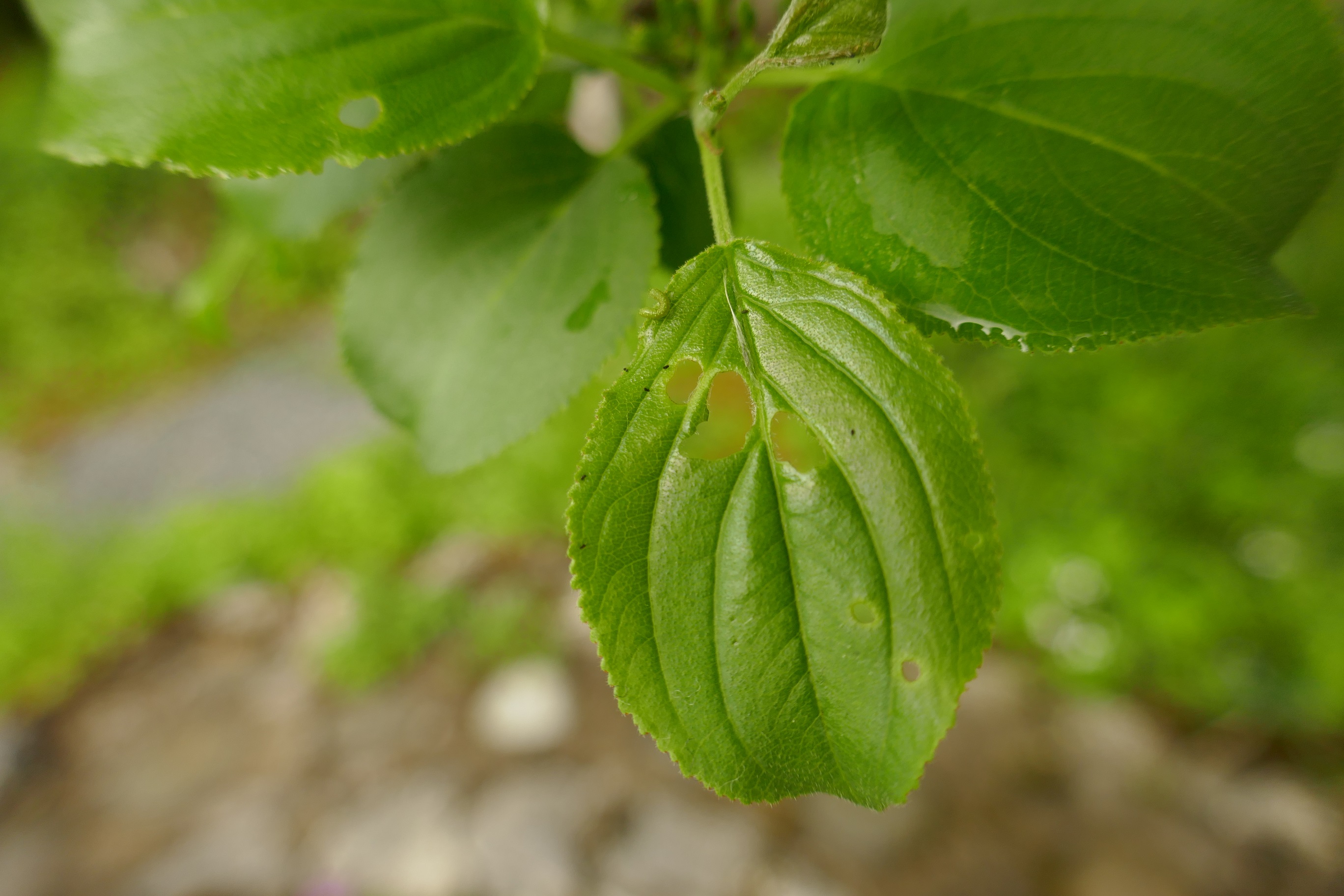
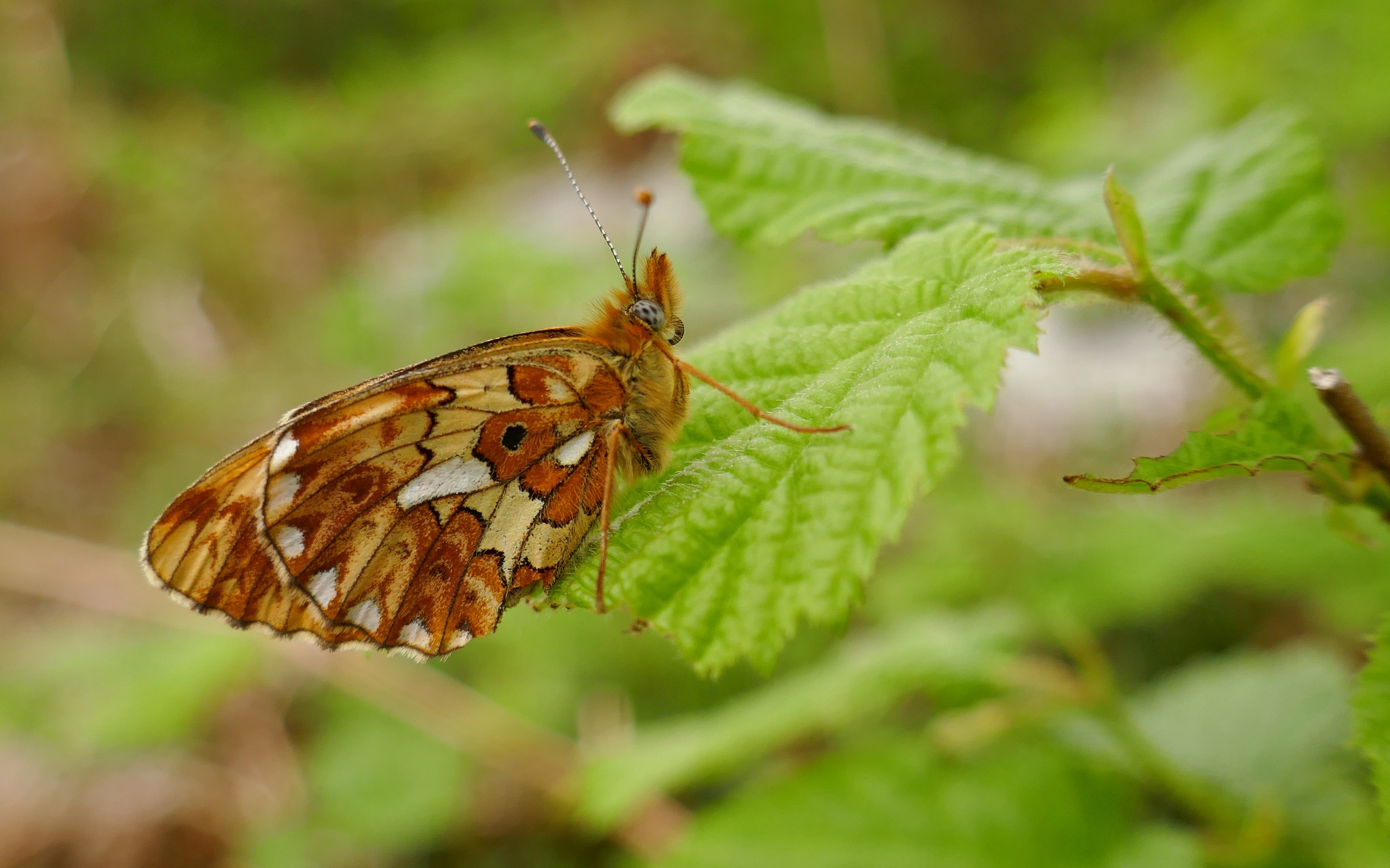
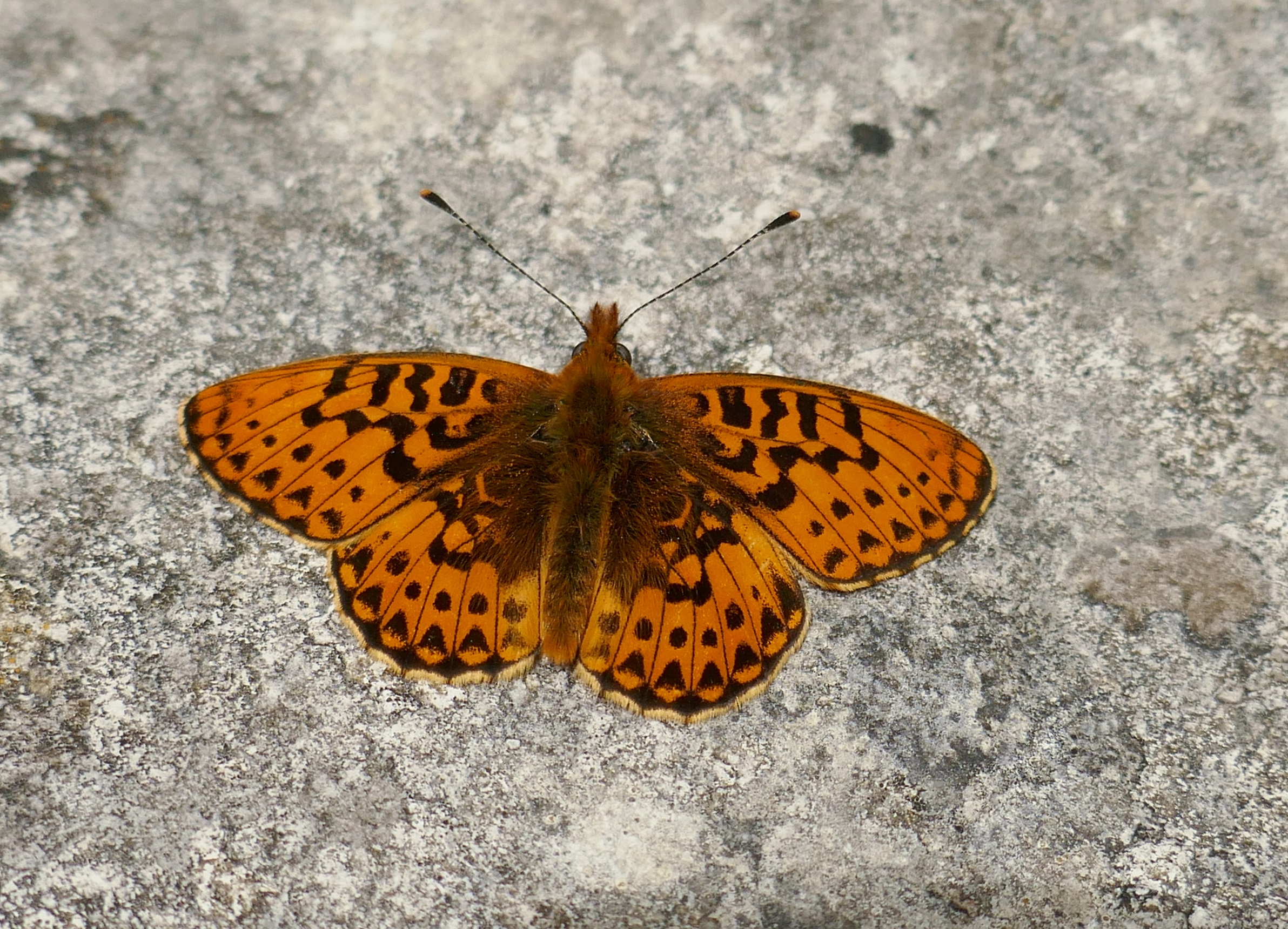
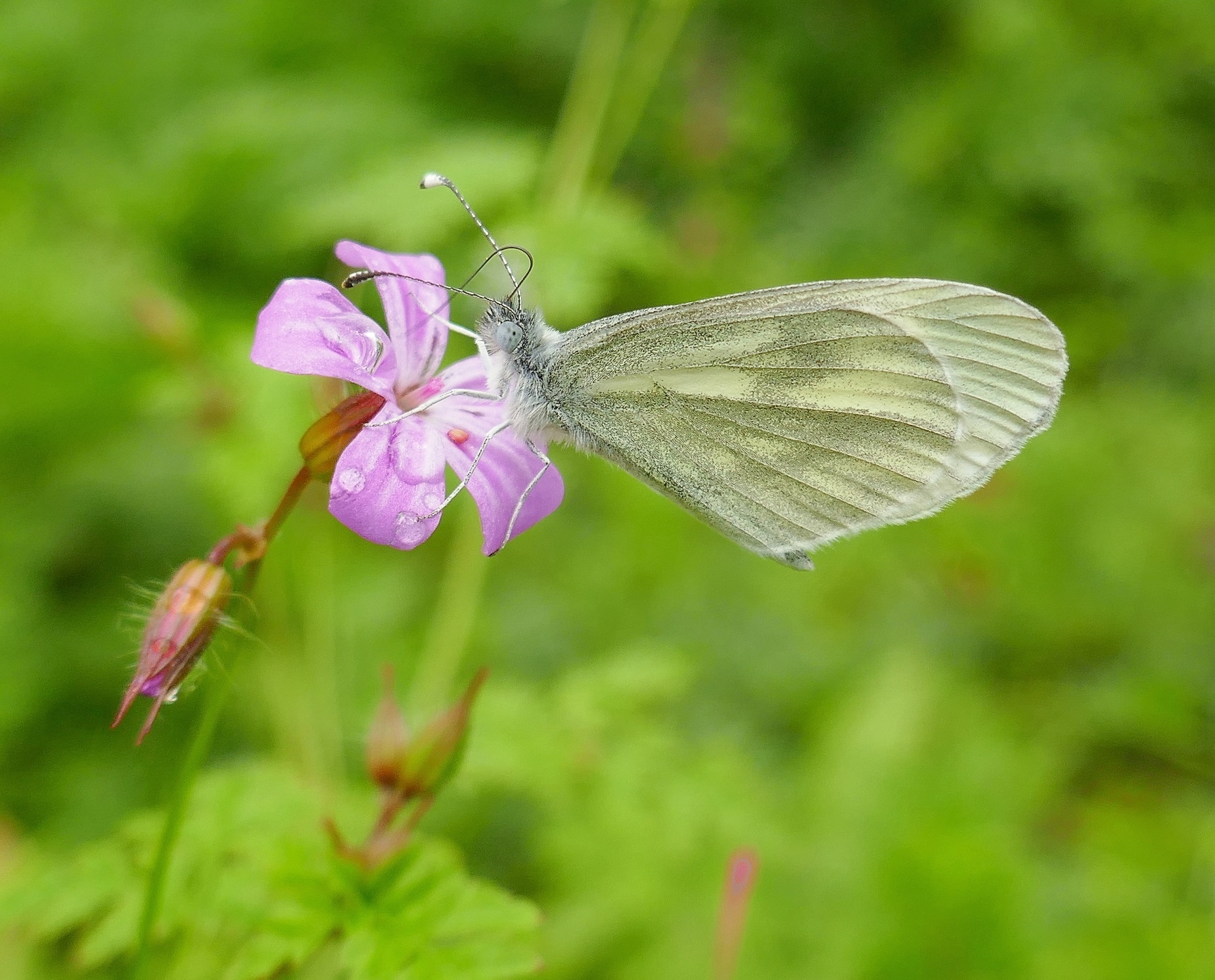
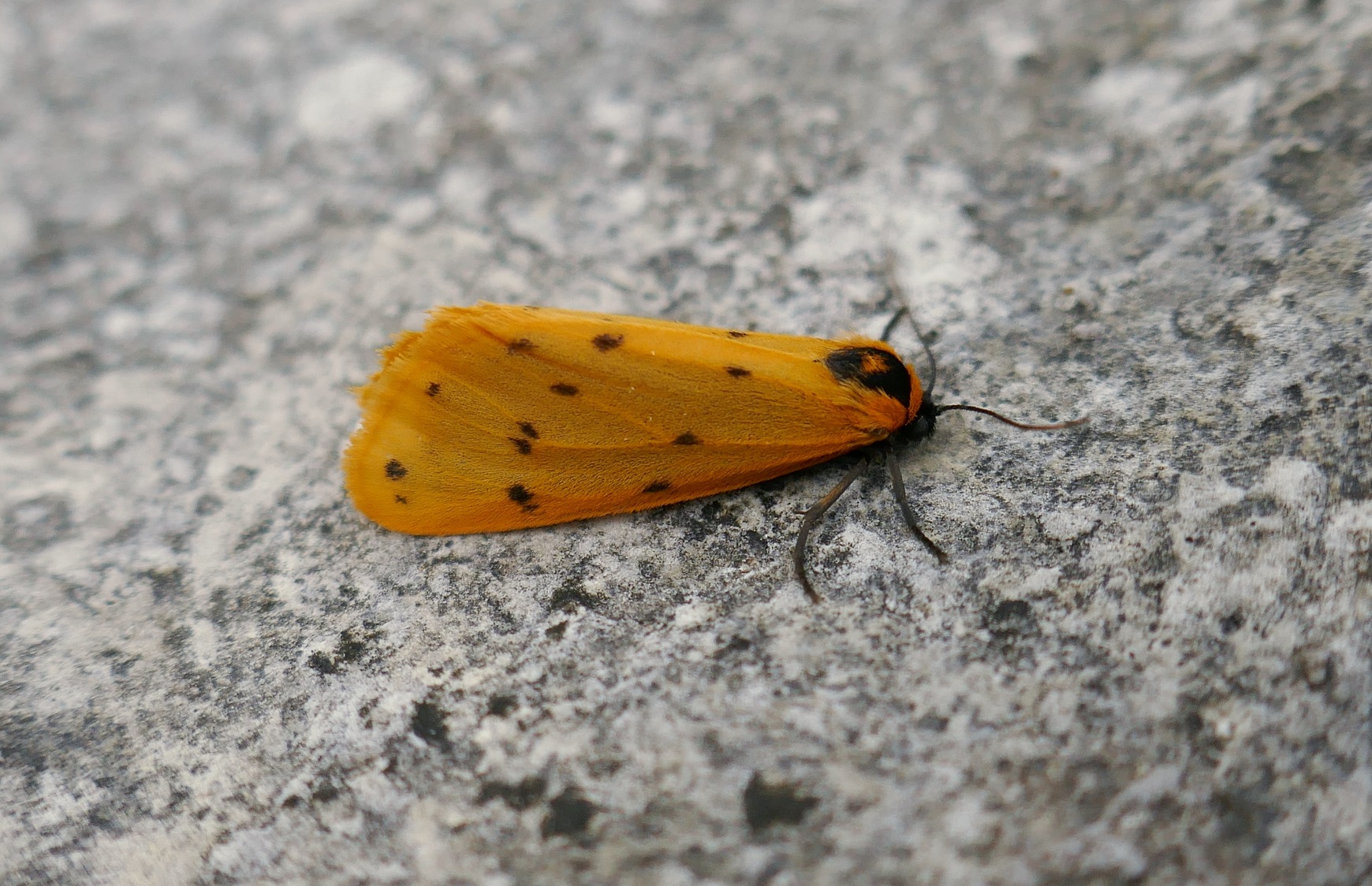

Thanks to all who attended the walk, and a special thanks to Pranjali from the Burrenbeo Trust, who helped to organize this event, a collaboration between Butterfly Conservation Ireland and Burrenbeo Trust.

